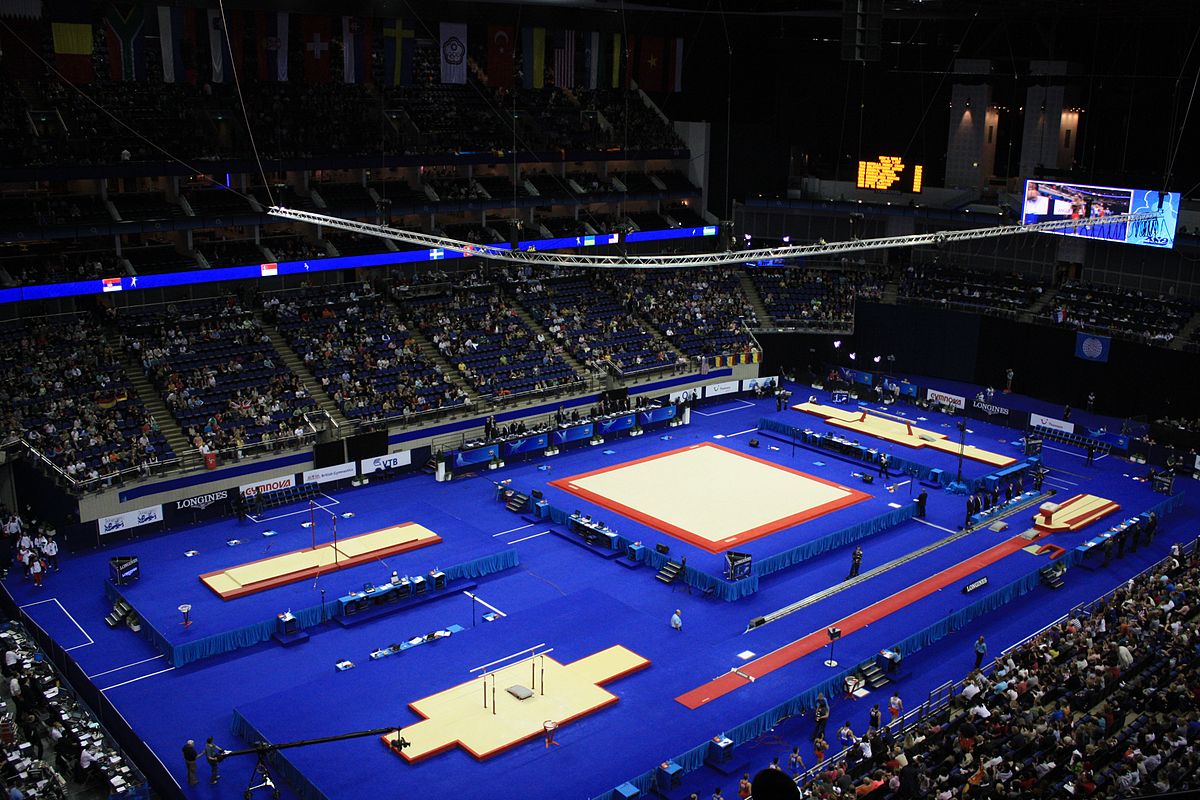Artistic Gymnastics World Championships are a notoriously long event. With a couple of days for acclimatization and training, then podium training and competition, gymnasts can currently expect to spend more than two weeks at Worlds, which can be difficult and pricey. In addition, having to train on hard surfaces (without foam or resi pits) for such a long time can be detrimental to the health of the gymnasts. For the less financially secure federations, this can be a big issue and some gymnasts end up having to crowdfund their trips to Worlds. Sometimes, if the federation does not expect their gymnasts to make any finals, they book tickets to leave right after the qualifications, which can be quite disappointing for the gymnasts wanting to watch the competition and experience the atmosphere even if they’re not competing. If those gymnasts do make the finals, this results in frantic ticket changes, which also costs them a lot of money. For example, the Israeli gymnastics federation had to change tickets and book extra hotel nights for Artem Dolgopyat when he made the floor final in Montreal in 2017.
Since currently, any country can send four gymnasts to the first Worlds of the quad, a full team to the second Worlds and three gymnasts to the pre-Olympic Worlds (if they didn’t qualify a full team), with no pre-qualification requirements, this also often results in a relatively low level of gymnastics from some countries.
The International Gymnastics Federation (FIG) will be implementing new rules for the World Championships in the 2021-2024 quad that is supposed to cut the length of the competition by four days and raise the level of gymnastics at the competition.
Gymnasts will have to qualify to the World Championships in 2022 and 2023 via either Continental Championships or Apparatus World Cups. Only 24 teams will be allowed to participate at the World Championships and the teams will qualify via Continental Championships. For WAG, 24 teams will include 13 teams from Europe, 5 teams from the Americas, 4 teams from Asia and one team each from Africa and Australia/Oceania. For MAG, it’s also 13 teams from Europe, one each from Africa and Australia/Oceania, but 4 teams from the Americas, 5 teams from Asia. At the pre-Olympic Worlds, the 8 teams each for MAG and WAG will pre-qualify at the previous Worlds.
40 men and 49 women whose teams did not qualify will be able to earn a nominative qualification through the all-around competition at Continental championships, with a maximum of two gymnasts per country.
In addition, gymnasts whose teams did not qualify to Worlds and who did not qualify via the all-around competition at Continental champs will be able to qualify via Apparatus World Cups – 8 gymnasts per apparatus will be able to do so, with a maximum of two per country on each apparatus. The gymnasts who qualified via World Cups will only be able to compete on the event they qualified. Only five individual gymnasts per federation can qualify via Continental Championships and World Cups.
For 2021, the individual World Championships, there is no qualification procedure and all federations are allowed to bring 6 MAG and 4 WAG athletes, with three gymnasts being allowed to compete per apparatus.
In 2025, the FIG will cut the size of delegations at the individual Worlds and will be able to bring only three gymnasts for WAG and three for MAG, with only two gymnasts allowed to compete per apparatus.
The qualification requirements also mean that some continental federations have to alter the format of their competitions. For example, the European Championships traditionally alternate between the team and individual years. During the individual years, there is only a senior competition and MAG and WAG competitions are held together and take a week. During the team years, MAG and WAG competitions are separated (and sometimes held in different cities, like in 2020, when MAG will compete in Baku and WAG – in Paris), but a junior competition is added. If the organizers will have to have both the team and the all-around finals in 2022 (normally a team year) and 2023 (normally an individual year) without removing the junior events, this will significantly lengthen the competition. Qualification for Worlds will make the Continental Championships more important but, if they become longer, may make them less affordable for the federations.




So if only 8 teams qualify to the pre Olympics World Championships then that means it’ll be the same teams from team finals as the year before… that’s boring & I don’t like that! At least let 12 teams qualify to pre Olympics Worlds!
Nevermind, I learned that it’s still 24 teams just that the top 8 from team finals the year before automatically qualify. I was too tired to realize that earlier haha 🤣